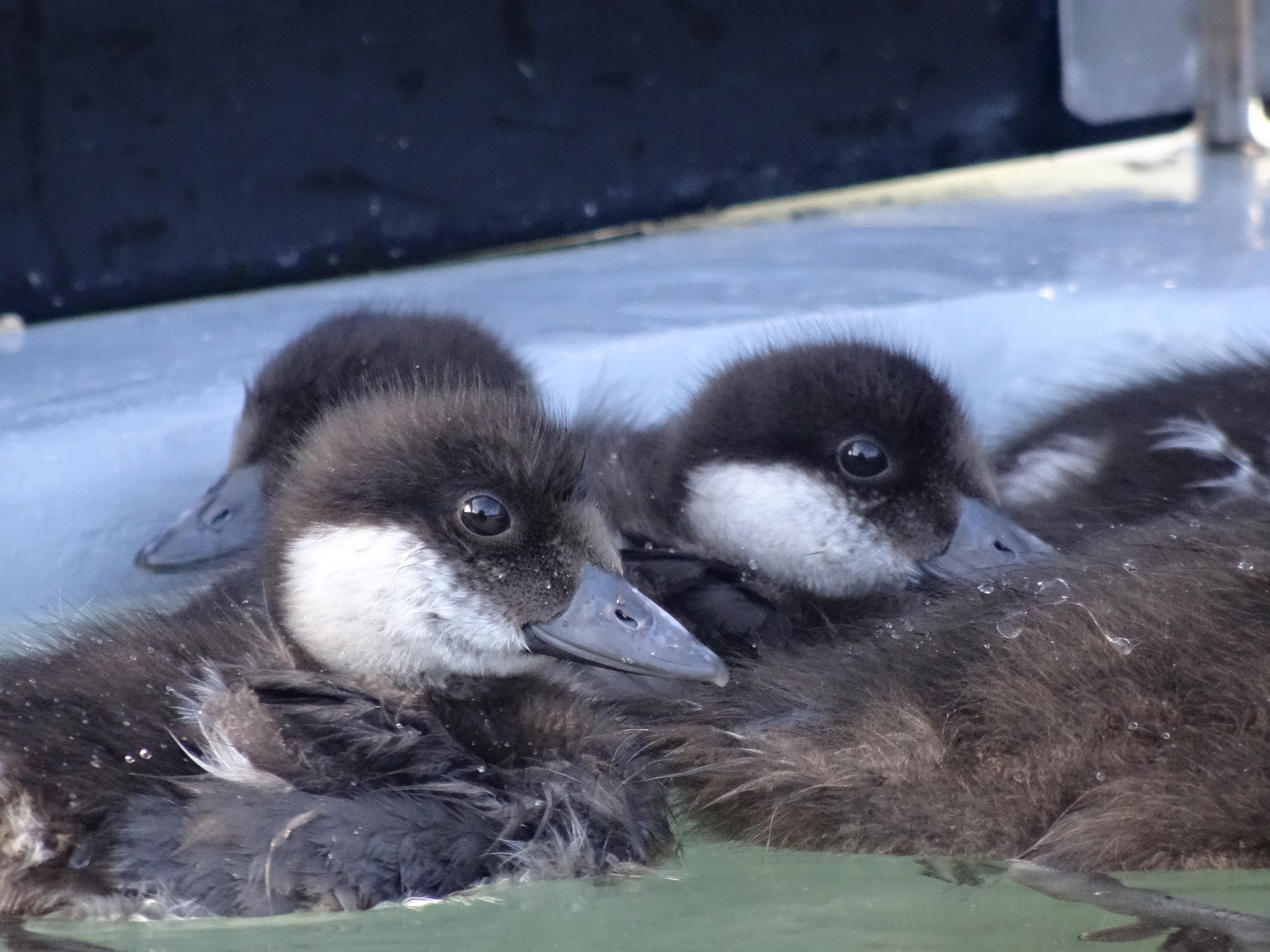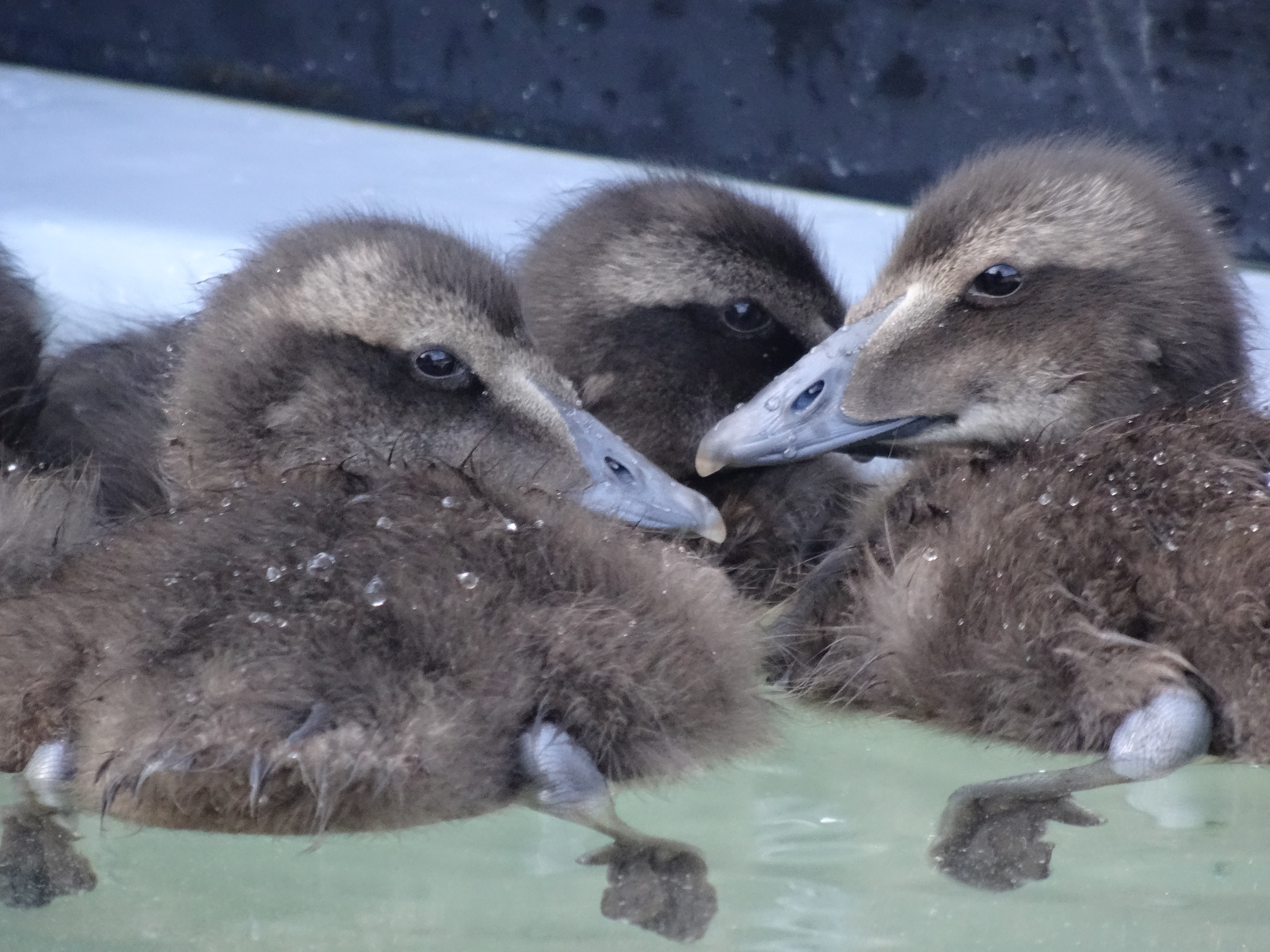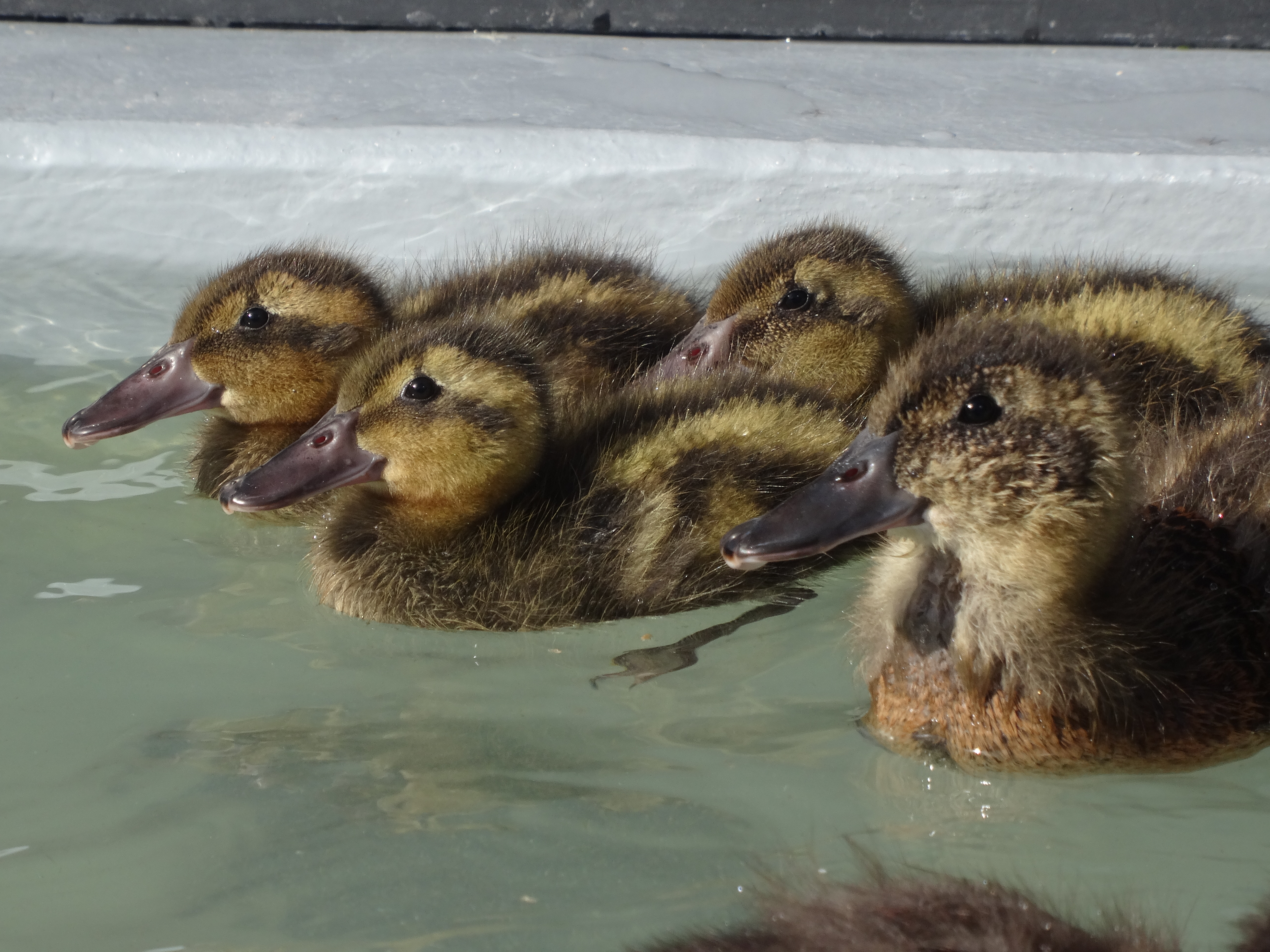Wet rearing at Slimbridge - what's fluffy right now?
Suddenly, it's July! We've had an exceptionally busy June, and thankfully we have a lot of beautiful birds to show for it.
These lovely little ducklings are Bufflehead, a stunning North American sea duck. Part of the Bucephala (Goldeneye) family, these pretty little ducks have evolved their small size in order to monopolise the nesting opportunities provided the Northern flicker (woodpecker) in Canada and Alaska. Their size barely relates to their behaviour however, because these little ducks have the heart of a lion and the headbutt of a buffalo! Adult Bufflehead males are seen to steam across lakes and rivers in the pursuit of subordinate males whilst violently bobbing their iridescent purple heads. They'll take on anything, and can be merciless in a shared pond or lake due to their tendency to attack from below the water. The females don't stand a chance for a bit of peace and quiet unless they give some attitude back, and so Bufflehead courtship can be quite intense.
You'd barely know this from looking at their innocent eyes however, because at this age they are little sweeties... Due to their small size the juvenile Bufflehead has a strong urge to dive to evade danger. This is a very natural evasion technique for a species that in it's first 4 weeks represents a single mouthful to a hungry predator. As a result their juvenile captive behaviour is quite nervous but friendly. This young brood have been reared with the Common Eider below, and have become quite confident quite early on. They're just beginning to feather, dextrously waterproofing them as they grow. Bufflehead need a water body to swim on when they are young due to their natural evasion instinct, and their capacity for boredom. Bored sea ducks can pluck their breast feathers, and thus limit their buoyancy and waterproofing. This then causes them stress when they swim, developing a fear of swimming. Who ever heard of a hydrophobic sea duck?! And so here they are; bobbing around to their heart's content...

These fluffy monsters are European Common Eider. Despite their size and girth, these birds are not old in days. They hatch out from an egg the size of an average goose! Their fluff is second to none due to their need to stay warm and insulated in Northern climates across the tip of Scotland, Iceland and Scandinavia. Famous for their down; Eider nests are a lovely place to be, but eventually the ducklings have to leave and find food for themselves. They will head out with mum and investigate coastal pools, rivers and streams before heading out into the bay. Their feet are large a muscular, and able to propel them well above and below water. Their beaks are well sized also and help them to eat crustaceans from an early age.
In a hand-rearing situation, water is also very important for young Eiders due to their tendency to make a mess... There is nothing more pooey than a group of Eider! They will not only poo in their water dish, but their food dish too, all over the carpet, and sometimes each other. We try to keep them in small groups of 4 max, but even so! They're better off in a deep diving tank from 2 weeks of age. Water is also of great benefit to them due to their weight. They are a very densely muscled duck, built to ride ocean swells and withstand merciless weather. When they're sat on a sunny bank in sunny Gloucestershire, suddenly they can look very encumbered... It is important to make sure that Eider have graduated sides to their water body in order to keep their feet and legs healthy during entry and exit, but more than anything they need a lovely lake to take the weight off their toes...

Black-headed duck are forever a great excitement at the Slimbridge Duckery. These amazing little ducks are a parasitic species from South American wetlands, where they hybridise not only with other wildfowl but also coots, gulls and Caracara! This friendly cuckoo duck does nothing to harm their hosts however, because unlike our European cuckoo they simply lay an egg and leave it. The eggs hatches after 20 days, the duckling sits quietly until dry and mobile, and then disappears off into the great unknown. These remarkably resourceful ducks rear themselves alone in the wilderness.
In captivity, we've tried loads of ways to rear them. The best method of them all however is definitely (you guessed it) on water! Because mum drops eggs willy nilly into the nests of other aviary birds, they all hatch out one by one, here and there. I should be thankful then that they are friendly little creatures, who, despite their wild loner habits, seem to like company when offered... These 4 are all getting along famously with a small group of white-headed duck. Unlike any of the other diving ducks and sea ducks that we wet rear, these guys have teeny tiny feet. This is important because this clearly makes them a poor diver, and thus not at home on the water? Wrong. These little ducks are so long in the body, and their legs are so far back, that watching them attempt to walk is like trying to ride a trike without the third wheel on the front! Inelegant to say the least... When reared dry, these birds get dirty breasts, sticky feet, and roll on their backs a lot. And so, water is their friend. It makes them dextrous, clean, and content. Some people have argue that they belong to the stifftail family, and whilst I don't agree, I will continue to rear them the same... Love them!


